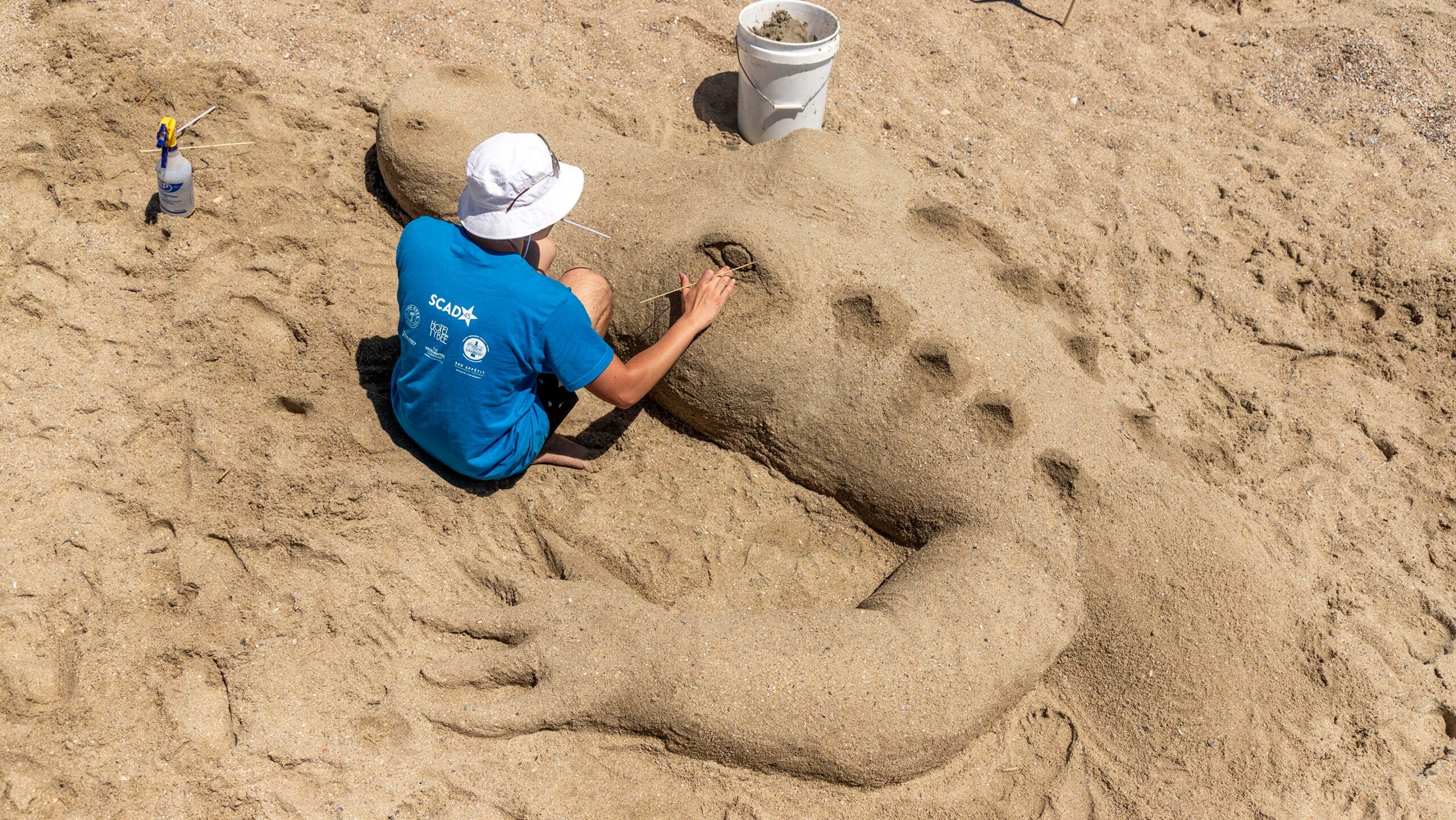At the Denver Art Museum, a chandelier models the fronds of a tropical banana plant. A copper chair resembles a tree canopy. In one room, vibrant illuminated blooms hang from the ceiling.
These are just some of the displays featured in a new museum exhibit that highlights the “transformative power of nature” through art and design.
The “Biophilia: Nature Reimagined” exhibit features over 100 works by more than 30 artists and designers from across the globe. The exhibit examines three themes: patterns in the natural world, artistic interpretations of natural phenomena, and the emotional connections people have with the physical environment.
Museum Curator Darrin Alfred has been pushing for this exhibit for a decade.
“Many exhibitions focus on sustainability, or sort of the greening of design, or using sort of natural materials,” he said. “But I was really interested in sort of tapping into that kind of emotional connection that we have with the natural world.”
Get top headlines and KUNC reporting directly to your mailbox each week when you subscribe to In The NoCo.
Several studies have proven that increased time in nature can lead to better physical and mental health. Reports have also found racial disparities in access to nature. In the U.S., Black, Latino and Asian communities tend to have fewer forests, bodies of water and other natural places near their homes.
Alfred said the exhibit is meant to help all visitors reconnect with nature.
“We’re in a time where things are moving fast. We’re sort of connected to our phones and these digital devices almost 24 hours a day,” he said. “These works aren’t meant to be replacements for that nature-based experience, but it’s more about sort of opening that door for us to be able to understand it better, the importance of it and getting out there and experiencing it ourselves.”
Alfred refers to “Biophilia” as a “design exhibition” because, in addition to 2D art, this exhibit incorporates fashion, home fixtures and even whole buildings on display.
Some pieces focus on Colorado’s natural landscape. Meadow by the studio DRIFT features a room with 18 flowers hanging from the ceiling that bloom throughout the day. Alfred said another piece – Studio Gang’s Populus Hotel – was inspired by Colorado’s aspen trees.
“What you see here are these windows that are reminiscent of those dark circles that are left on the bark of aspen trees as they sort of shed their lower limbs,” he said, pointing at a 3D model of the building in the exhibit. “But also the form itself, sort of these tall, stark kind of white trunks that stretch into the sky.”
Other pieces are derived from the ways the artists themselves have been impacted and inspired by nature. The Nana Lure Chandelier by PELLE Designs was formed out of an experience Jean Pelle had while on vacation in Santa Barbara. The piece has six “banana leaf fronds” made of cast cotton handmade paper and is sculpted, colored and painted by hand. Inside each frond is an LED light.
“We saw this banana leaf frond and it was just this really vibrant, beautiful green, purple banana leaf that stood out in my mind,” she said. “Around the same time, we were casting cotton paper and making that into light fixtures, and that frond shape looked like a lampshade. And so just kind of all those thoughts combined together.”
Pelle believes that the chandelier does not need much of an introduction. Instead, she hopes people have a personal interaction with it and that they think about their own special memories with nature.
“We’re drawn to nature’s beauty. We’re drawn to nature’s coloring, the way that light interacts with nature. The way that leaves look translucent in in the bright sunlight, even when you’re looking at dew drops and you just look at the sparkle,” she said. “It is magnetic. It’s so powerful. It’s an incredible experience.”
That’s not the only chandelier at the exhibit. The Floraform Chandelier by Nervous System is a four-foot-wide, 3D-printed white nylon light fixture that is reminiscent of leaf veins and casts a similar shadow on the floor when light shines through.
Jessica Rosenkrantz and Jesse Lewis Rosenberg formed Nervous System out of a desire to combine their interests after studying at MIT together. Rosenkrantz studied architecture and biology, and Rosenberg studied math and computer science. They have consistently been inspired by the aesthetics of nature and how patterns in nature form. Recently, they’ve designed everything from jewelry to lampshades to 3D-printed organs.
“You can explain a lot of patterns in nature through mathematics and simulations,” Rosenkrantz said. “Like, why does lightning look so similar to how river deltas look? And why does that look so similar to branching patterns you see in trees? It’s because there’s a similar dynamic to the processes that generate those types of patterns, even though they’re working in different medias and at different scales.”
In addition to the artwork, visitors can take part in a nature questionnaire that asks people to answer questions about what they believe the role of nature is in society. At the end, visitors receive a score based on how connected they are to nature along with suggestions on where to get more connected to nature in the Denver area.
“Biophilia: Nature Reimagined” is open through mid-August and is included in general admission to the Denver Art Museum.
Get top headlines and KUNC reporting directly to your mailbox each week when you subscribe to In The NOCO.


